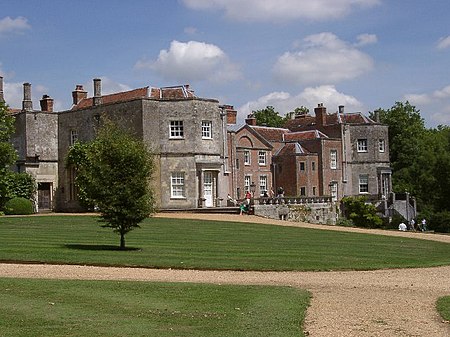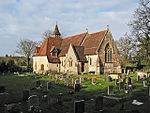Mottisfont Abbey
1201 establishments in England1536 disestablishments in EnglandAugustinian monasteries in EnglandChristian monasteries established in the 13th centuryCountry houses in Hampshire ... and 8 more
Gardens in HampshireGrade I listed buildings in HampshireHistoric house museums in HampshireHistory of HampshireNational Trust properties in HampshirePriories in HampshireRose gardens in EnglandUse British English from February 2023

Mottisfont Abbey is a historical priory and country estate in Hampshire, England. Sheltered in the valley of the River Test, the property is now operated by the National Trust. 393,250 people visited the site in 2019. The site includes the historic house museum which features regularly changing art exhibitions, gardens, including a walled rose garden which is home to the National Plant Collection of ancestral rose species and 19th-century rose cultivars, and a riverside walk. It is a Grade I listed building.
Excerpt from the Wikipedia article Mottisfont Abbey (License: CC BY-SA 3.0, Authors, Images).Mottisfont Abbey
Cellarium, Test Valley
Geographical coordinates (GPS) Address Nearby Places Show on map
Geographical coordinates (GPS)
| Latitude | Longitude |
|---|---|
| N 51.04143 ° | E -1.53496 ° |
Address
Mottisfont Abbey
Cellarium
SO51 0LL Test Valley
England, United Kingdom
Open on Google Maps







